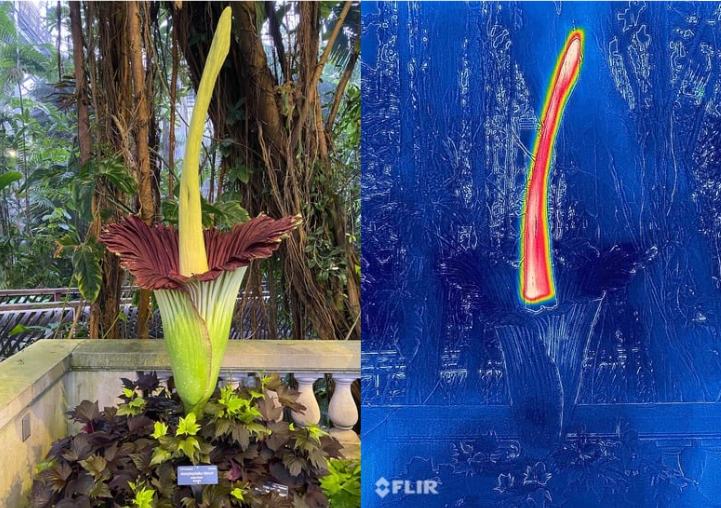How often do corpse flowers bloom?

WASHINGTON (DC News Now) — Everyone seems to be making a big stink about corpse flowers at the United States Botanical Garden (including the plants, themselves). So, what’s the big deal?
Well, for one, the bloom of a corpse flower isn’t something that takes place every year.
(More on that in a second.)
First off, the U.S. Botanical Garden (USBG) explains on its website that the corpse flower (Amorphophallus titanum) has a powerful stink, and blooms for just 2-3 days. USBG has a number of corpse flower plants in its collection as part of the conservation work that’s done at the garden.
In 2024, USBG put two of the flowers on display beginning on July 13, 2024. It said it was possible that both would bloom around July 19-22.
Well, one of the plants bloomed overnight July 21 into July 22.
What makes a corpse flower special? Good question.
USBG says it’s the size of the plant, the smell it puts off, and the fact that it doesn’t stick around long after bloom. The plants can get up to 8 feet tall.
The botanical garden says: ” Its putrid smell is most potent during peak bloom at night into the early morning. The odor is often compared to the stench of rotting flesh. The inflorescence (a collection of flowers acting as one) also generates heat, which allows the stench to travel further. This combination of heat and smell efficiently lures corpse-attracted pollinators, such as carrion beetles and flies, from across long distances.”
As far as how often the corpse flower blooms, it doesn’t have an annual blooming cycle.

It has an underground stem called a “corm.” Energy is stored in the stem and the bloom comes from it when sufficient energy is accumulated…and only then. That makes the “time between flowering unpredictable, spanning from a few years to more than a decade.”
Copyright 2024 Nexstar Media, Inc. All rights reserved. This material may not be published, broadcast, rewritten, or redistributed.
For the latest news, weather, sports, and streaming video, head to DC News Now | Washington, DC.

